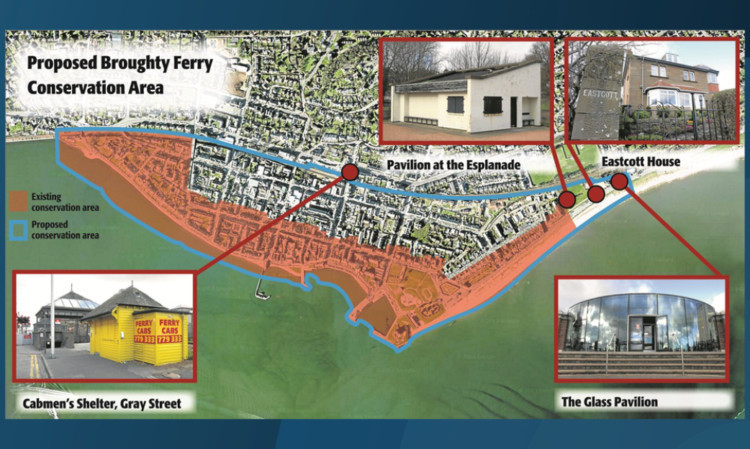Broughty Ferry could soon see a massive expansion of its conservation area.
Swathes of traditional shopping streets and historic sites, including the Glass Pavilion and Eastcott House, will now be included in the area if the proposal is passed.
Conservation areas impose extra rules on prospective developments, requiring them to protect the character of an area before they can be granted planning permission.
The proposed expansion, which will go before the city development committee next Monday, followed a local consultation which was almost wholly in favour of the enlargement.
Broughty Ferry Community Council members said they were “pleased” to see shop fronts were to be protected.
And they successfully lobbied for further areas to be included in the conservation area, beyond the council’s initial plans.
One of those additional sites included is the Cabmen’s Shelter on Gray Street, which is described by the report as “a crucial link in the transport system, with close associations with the nearby railway station”.
Broughty Ferry Community Council added: “We think that the ‘east character area’ should be extended along the Esplanade to include the house Eastcott and its listed neighbour the Glass Pavilion.
“Not only is Eastcott a large, attractive late Victorian/Edwardian house in its own right, it was also the home of a distinguished son of Broughty Ferry, Sir Francis Mudie.”
They continued: “This is an opportunity to include an area of attractive Victorian and early 20th Century housing by extending the boundary along the south of Monifieth Road from St Vincent Street to just before Panmure Street and then south to the railway line.”
Responding to the community council’s suggestions in the report recommending the expansion, director of city development Mike Galloway said: “The extension to the east of Rugby Terrace is seen as making a positive contribution to the character and appearance (of the area).
“The historic association of Eastcott further highlights its importance.”
He concluded: “The proposed boundary extensions would be in keeping with the special character and appearance (of the area) and would safeguard the unique historic environment.”
Other suggestions highlighted from the consolation include “support for emphasising the importance of local colours to traditional properties”.
Historic Scotland agreed that the proposal “works well”.
They said: “The layout and presentation is similar to the Dundee Central Conservation Area Appraisal and it works well.
“It gives a good understanding of the importance and significance of the Conservation Area.
“The proposed changes are welcomed and a more comprehensive approach is better for completeness.”
One consultation response did urge a rejection of the proposed expansion, suggesting that it would restrict “redevelopment and investment” in the area.
However, Mr Galloway said: “Conservation area status does not restrict investment as can be seen within other conservation areas, for example, the multi-million-pound regeneration work to Lochee High Street and the environmental improvement works within the City Centre.
“The extensions to the existing Conservation Area would help assist to promote investment through high quality design and retain the special character and appearance of the area.”
